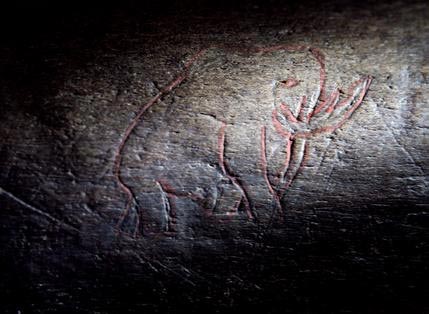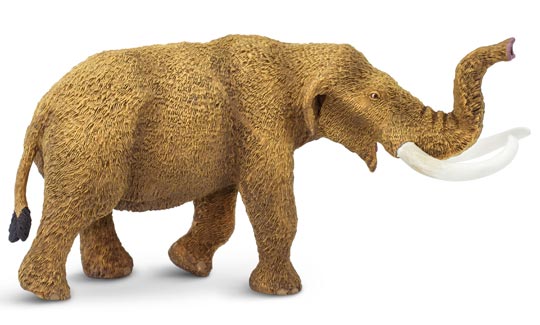Our thanks to prehistoric animal model fan and collector William who sent into Everything Dinosaur his detailed review of the Safari Ltd Wild Safari Prehistoric World Mastodon figure. Here is William’s review of this prehistoric elephant model, which was first introduced in 2018.
Mammut americanum – Sculpted by Doug Watson
As with most of his previous model reviews, William starts by commenting on the head. He states that the Mastodon has a lower, flatter skull than mammoths and extant elephants. He comments that the Wild Safari Prehistoric World Mastodon has well defined, dark orange eyes with black pupils and nicely sculpted eye lids. The model is shown with its mouth open, the tongue can be seen but there is no second set of tusks in the lower jaw as found in other types of ancient proboscidean. The ears are small and reflect theories on thermoregulation (heat dispersal and conservation) in these large-bodied mammals.
Details on the trunk are highlighted. The figure has its trunk raised, either to sniff the air or bellow a challenge to a rival. William praises the trunk commenting that in life it would have been used to pluck foliage and branches as well as having a role as a tactile, sensory organ. The reviewer states that living elephants have 40,000 muscles in their trunk and are capable of lifting over 700lbs. He speculates that Mastodons may have had stronger trunks.
William observes that the prominent tusks are of a natural ivory colour and held low. They model has flexible tusks with no sharp tips, so these protrusions do not represent a hazard and are unlikely to cause injury.
Visit Everything Dinosaur’s award-winning website: Everything Dinosaur.
Reviewing the Body and the Coat of the Mastodon Figure
William explains that the short, robust and muscular build of Mammut americanum was unlikely to lead to confusion with coeval mammoth species. The American Mastodon was ideally suited to its temperate forest environment. He provides size estimates and concludes that bulls were much larger than cows, as seen in living elephant species.
When discussing the coat, William states that it “is one of the finest sculpted I have ever seen, only surpassed by Eofauna’s Steppe Mammoth figure.”
The Wild Safari Prehistoric World Mastodon is a marvel to touch and to hold thanks to the exquisite details of the model’s coat. He states that it is refreshing to see this as with mammoths’ hair colour would have varied between individuals and William speculates that perhaps, every once in a while, a genetic abnormality would permit an albino variant to be born.
Strong Legs
William praises the strong legs and highlights the detailing such as the toenails. He comments that these large animals would have traversed temperate woodlands and conifer forests, eating a wide variety of plant material in order to satisfy their huge appetites. He completes his model review by stating that the model has a rich auburn colour with a dark wash that has been skilfully applied to highlight the skin folds and the muscles under the skin.

American Mastodon Fact File
To conclude his review of the model, William provided some additional information regarding this species, commenting that in 1705 in the New York village of Claverack a Dutch settler whilst out working dug up a large tooth, the first of many found over next two centuries. William briefly outlines the evolutionary history of the prehistoric elephant lineage and explained that it was the French naturalist Georges Cuvier who erected the genus.
William explained that these elephants ranged from Alaska/Canada in the north down to central Mexico, but there is no fossil evidence of these animals ever having reached South America. Most scientists believe that the last of the Mastodons perished along with much of the American megafauna around 10,000 years ago, although these huge herbivores may has survived until as recently as 4,000 years ago, in isolated pockets.
He states that the Wild Safari Prehistoric World American Mastodon is a great addition to his model collection and he adds that he received the figure with a fast despatch and delivery from Everything Dinosaur. It arrived in 100% perfect condition. William also praised the customer service of Everything Dinosaur.
To see the range of Safari Ltd prehistoric animal models in stock at Everything Dinosaur: Wild Safari Prehistoric World Models.








Leave A Comment